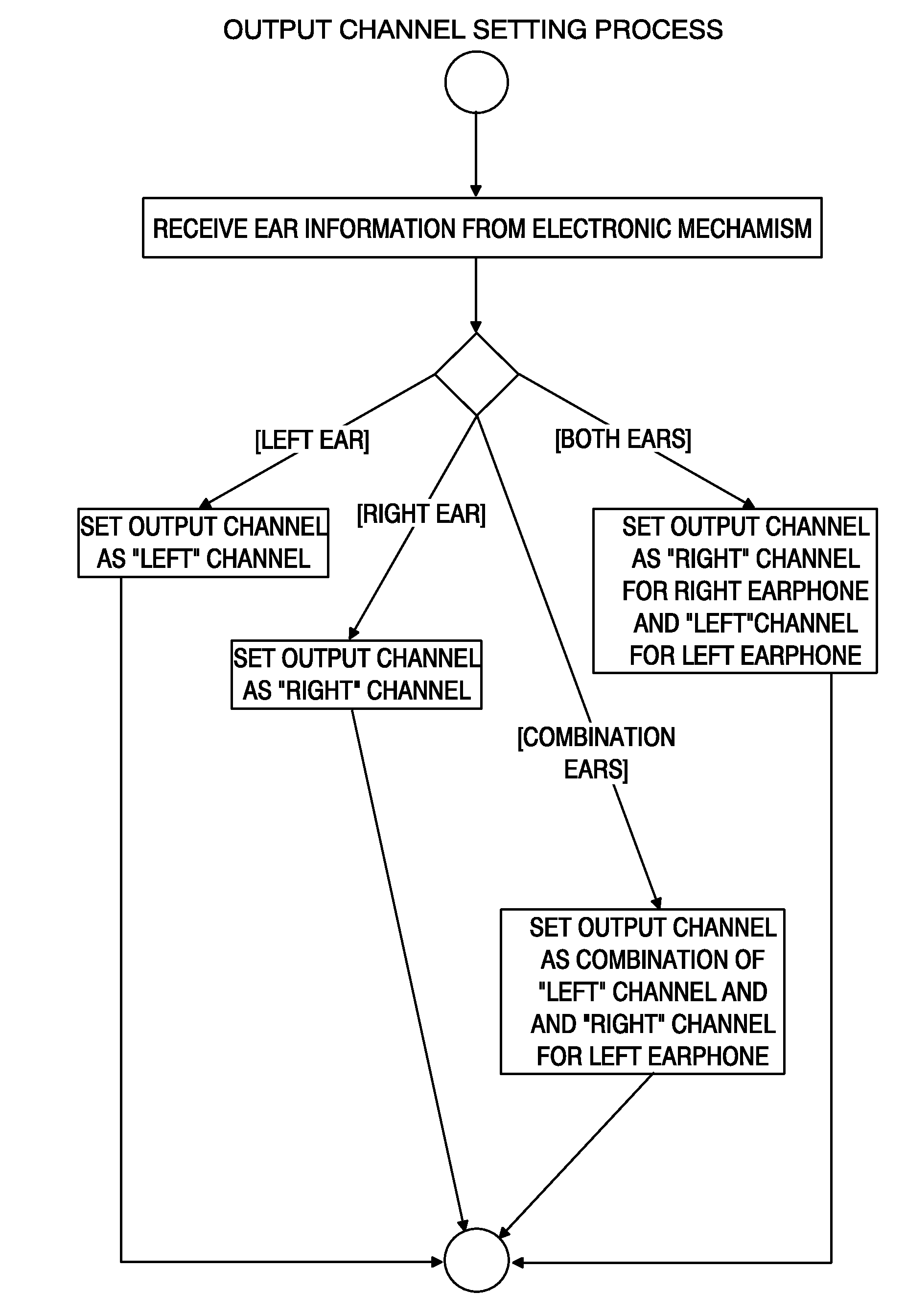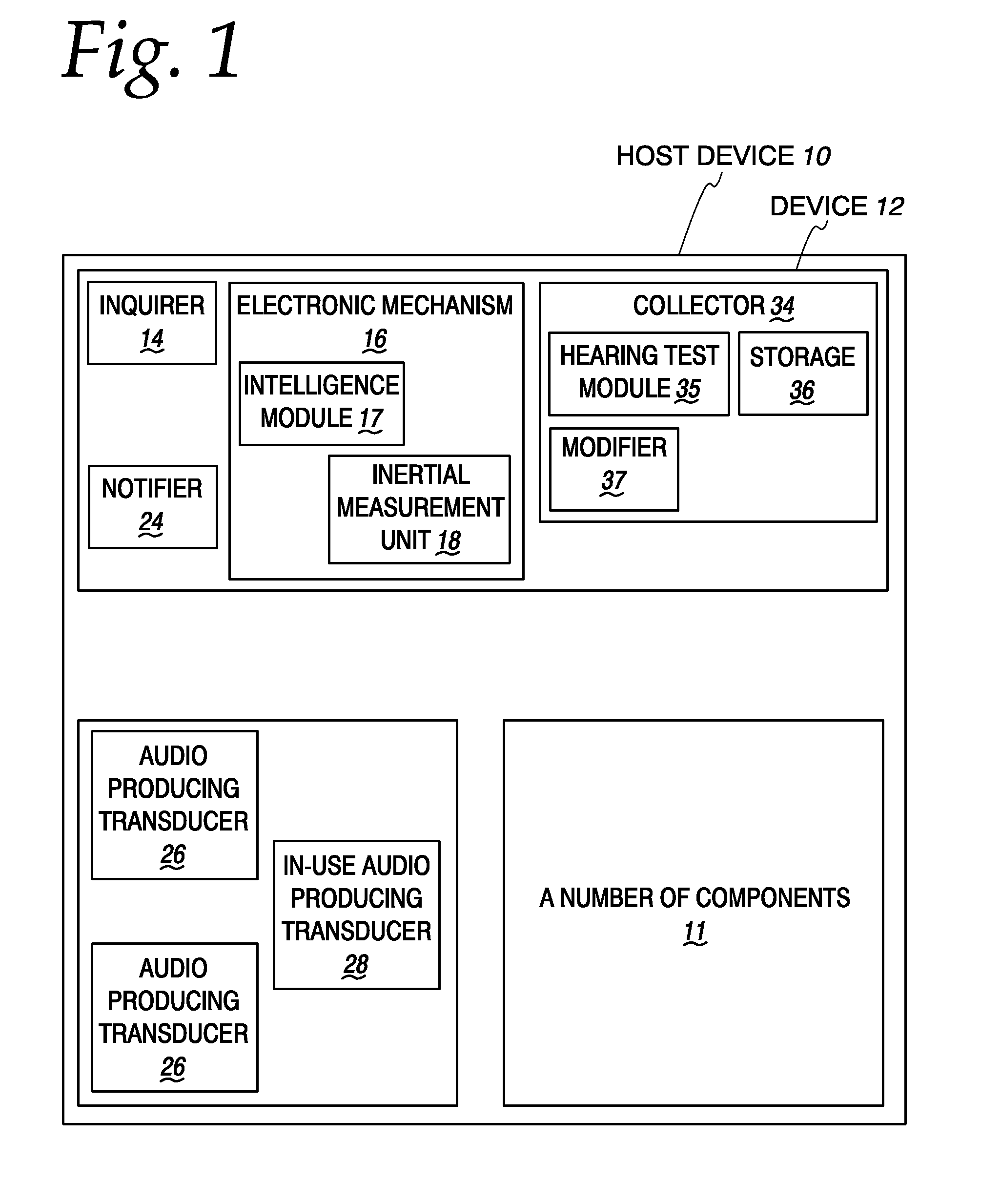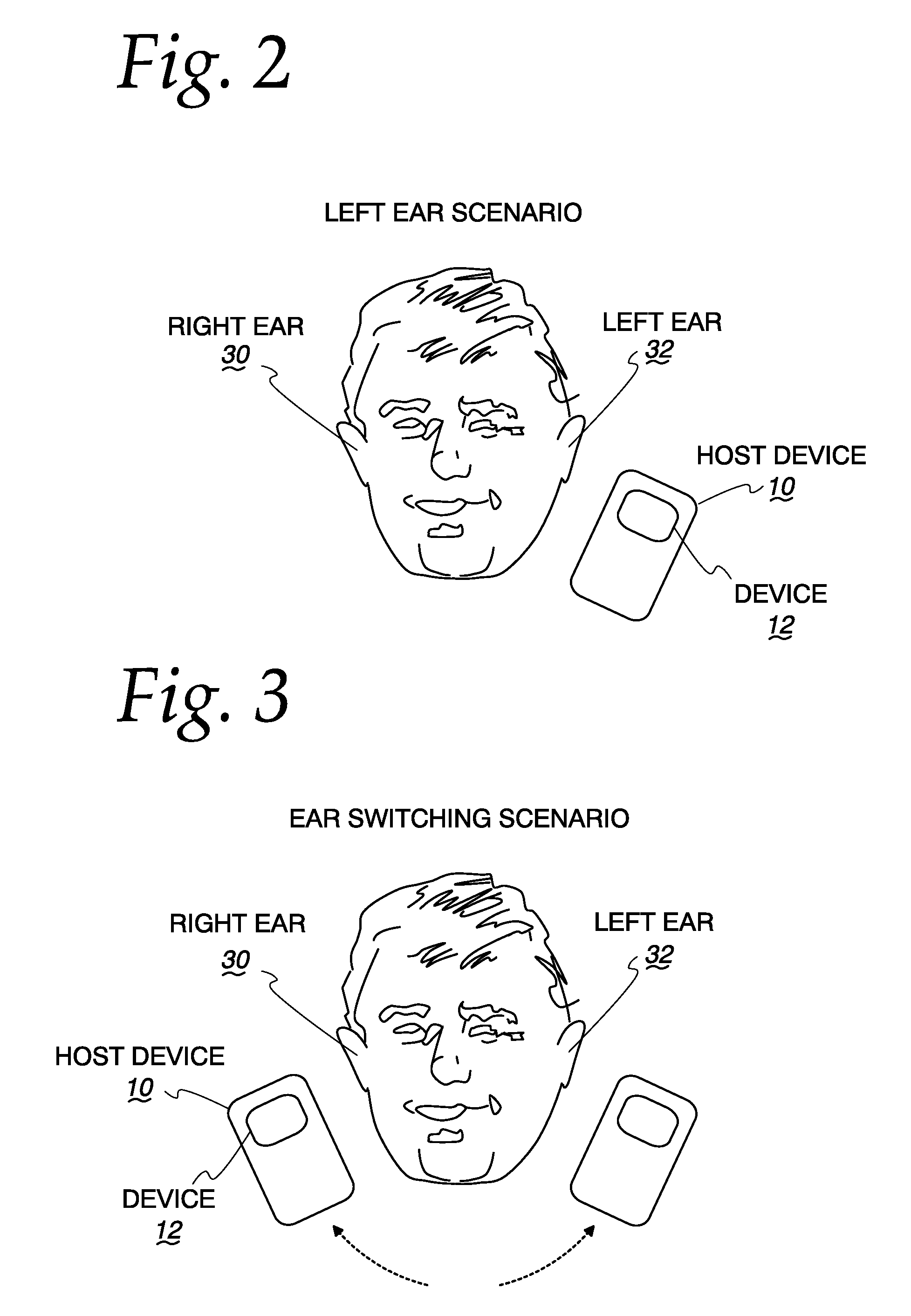System for Fitting Audio Signals for In-Use Ear
- Summary
- Abstract
- Description
- Claims
- Application Information
AI Technical Summary
Benefits of technology
Problems solved by technology
Method used
Image
Examples
case 1
[0019] If information from inquirer 14 stated that the in-use audio producing transducer 28 is of type earphone, intelligence module 17 will not pull or process measurement data from any one of the inertial measurement units 18. It will simply mark the identified ear as “both ears.”
case 2
[0020] If information from the inquirer 14 stated that the in-use audio producing transducer 28 is of type speakerphone, the intelligence module 17 will not pull or process measurement data from any one of the inertial measurement units 18. It will simply mark the identified ear as “combination ears.”
case 3
[0021] If information from the inquirer 14 stated that the in-use audio producing transducer 28 is of type earpiece, the intelligence module 17 will pull measurement data, such as pitch, yaw, and roll, of the host device 10 (for example, if inertial measurement unit 18 is a single gyroscope) from the inertial measurement unit 18. In this case, as for example when host device 10 is a smartphone as illustrated in FIGS. 2-4, when value of the roll falls within a negative predetermined range (which may, for instance, be characterized by the left edge of the phone being positioned generally below the right edge of the phone, left and right being defined from the perspective of one viewing the phone screen), it is an indication that the host device 10 is positioned on the left side of the user's head for left-ear listening. The intelligence module 17 would then mark the identified ear as “left ear.” On the other hand, when value of the roll falls within a positive predetermined range (as ...
PUM
 Login to View More
Login to View More Abstract
Description
Claims
Application Information
 Login to View More
Login to View More - R&D
- Intellectual Property
- Life Sciences
- Materials
- Tech Scout
- Unparalleled Data Quality
- Higher Quality Content
- 60% Fewer Hallucinations
Browse by: Latest US Patents, China's latest patents, Technical Efficacy Thesaurus, Application Domain, Technology Topic, Popular Technical Reports.
© 2025 PatSnap. All rights reserved.Legal|Privacy policy|Modern Slavery Act Transparency Statement|Sitemap|About US| Contact US: help@patsnap.com



